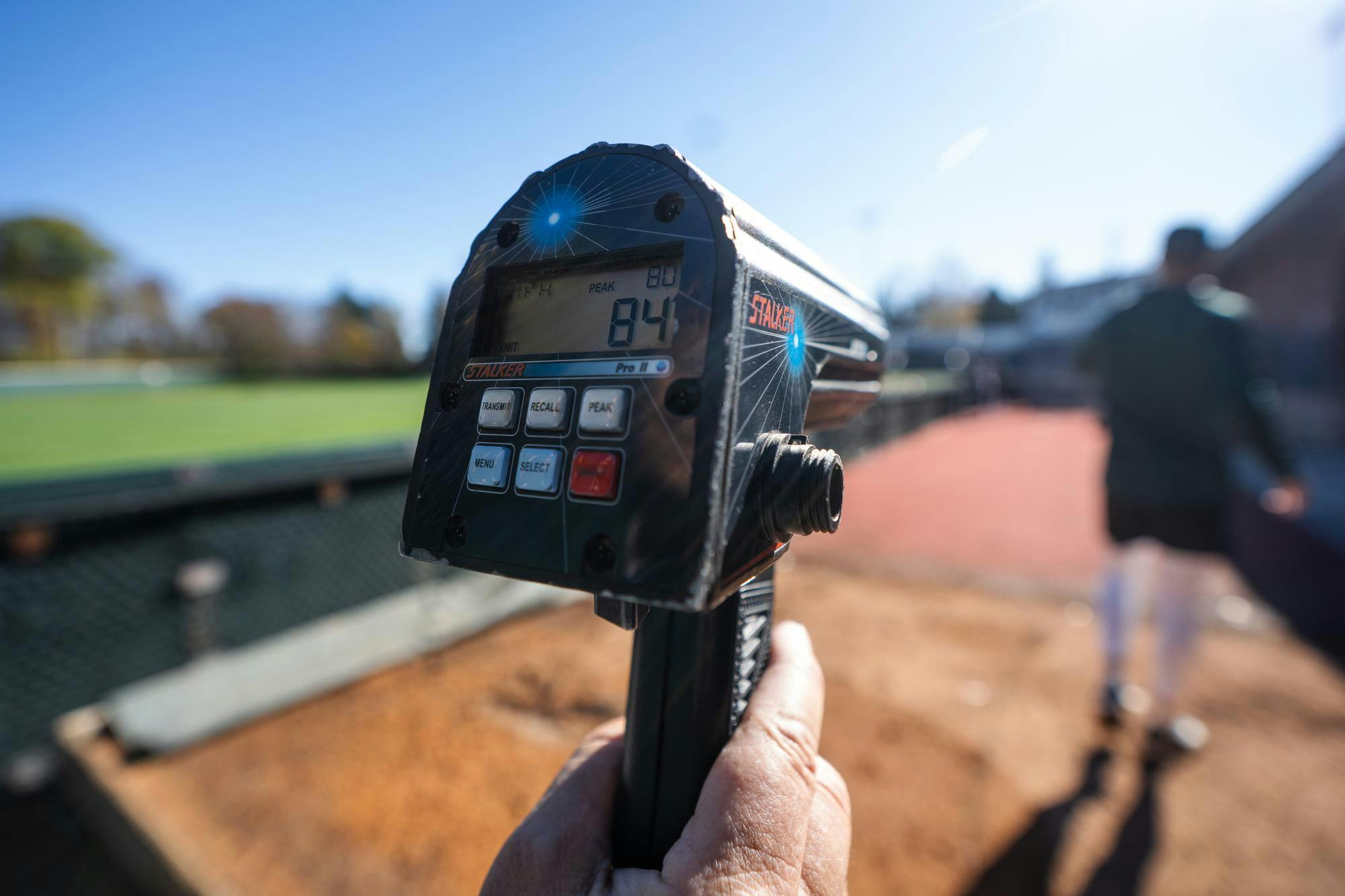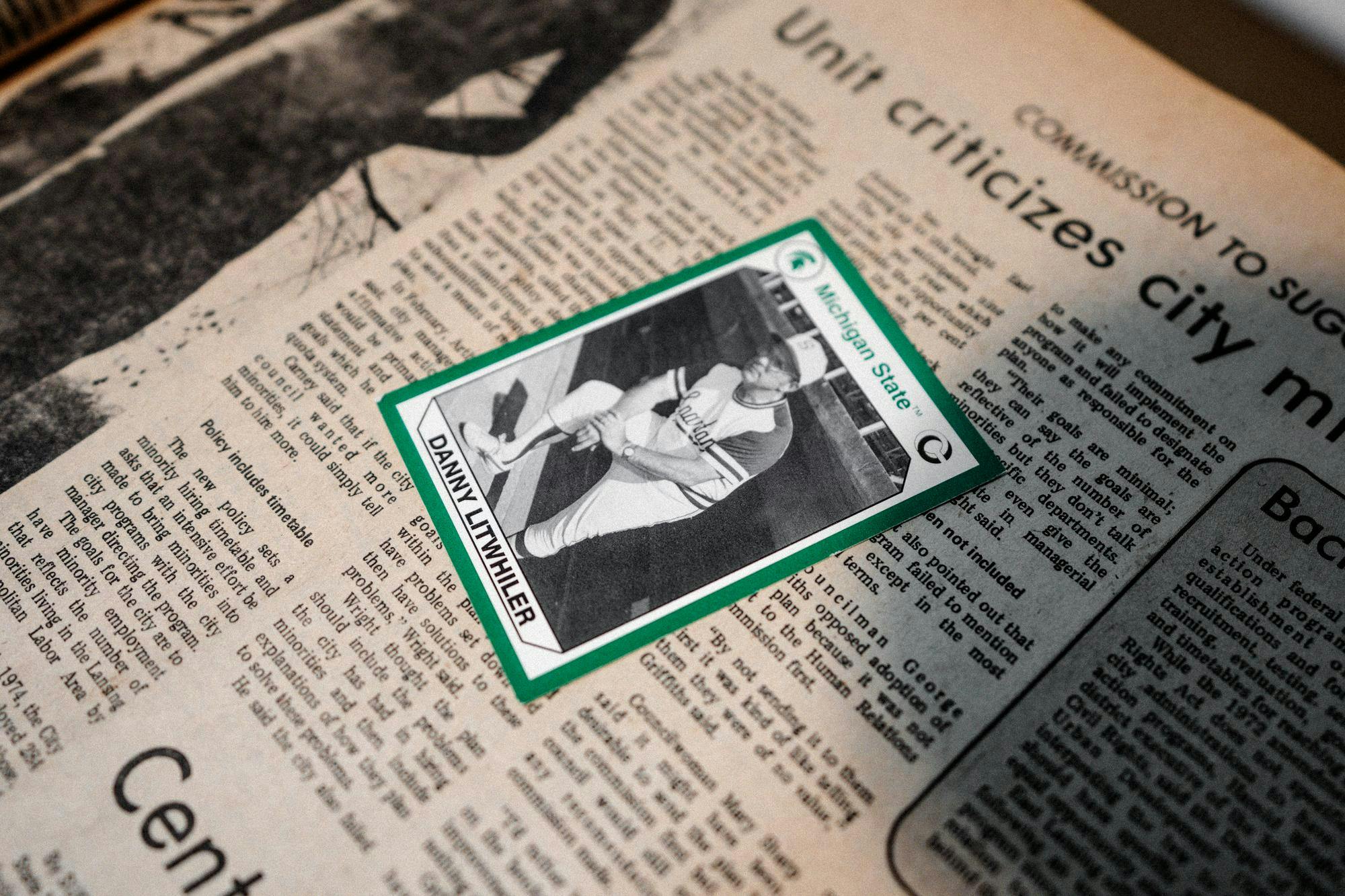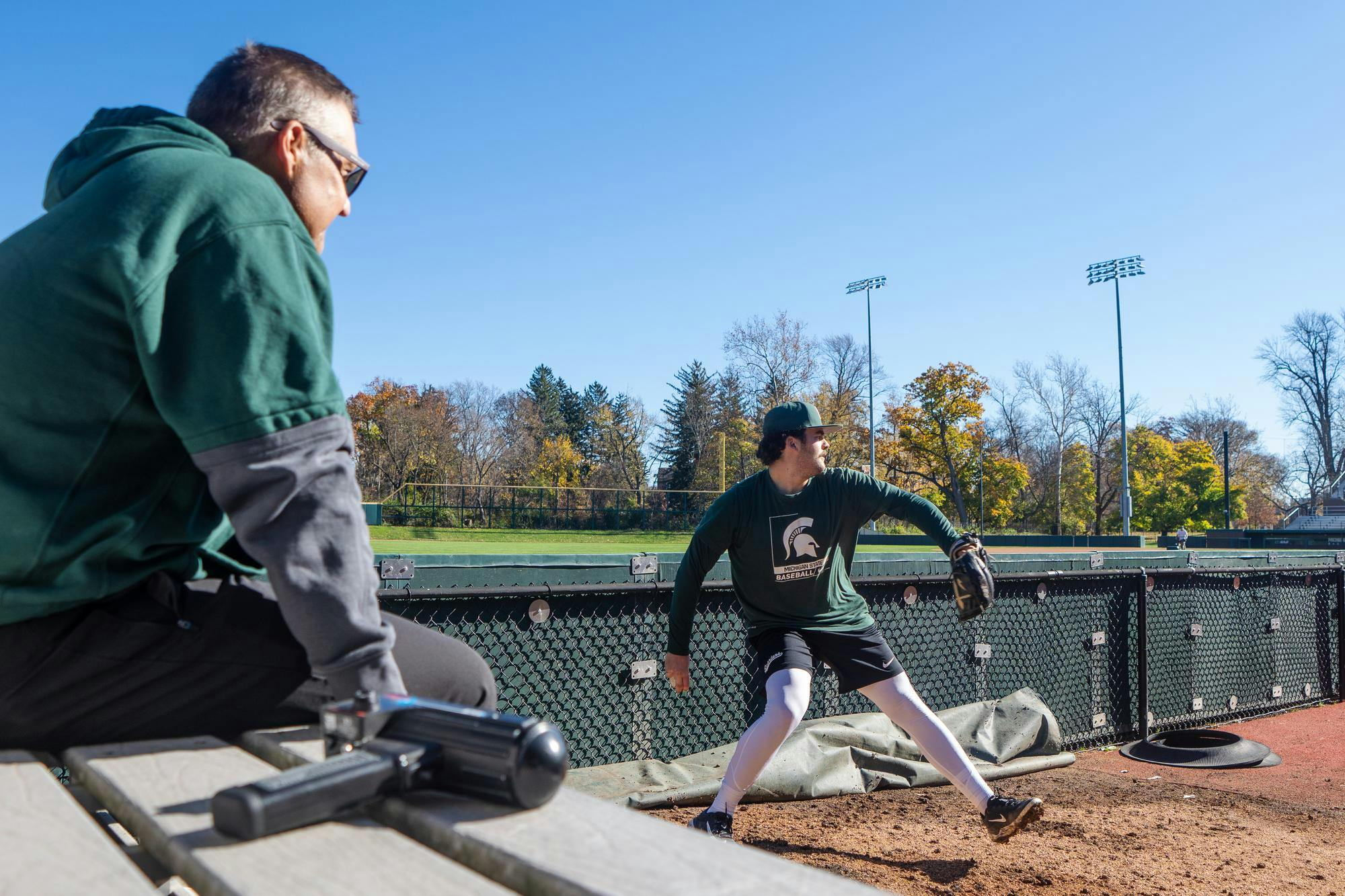Fifty years ago, an MSU student had no idea that a short story he was writing about the MSU police would go on to change the art of pitching in Major League Baseball.
Steve Orr was just getting his footing as a new reporter at the student paper, The State News, in 1974 when he covered the new radar guns MSUPD had purchased to catch speeding cars.
The story, titled “MSU police get radar gun,” takes up a mere half-page of the paper and includes a photo of a police officer holding the new tool.
"The next time you are cruising a campus street and get that urge to stomp on the accelerator and let it out, beware — the MSU police now have a radar gun," the story said.

The article reached Danny Litwhiler, the MSU baseball coach at the time, who thought the radar gun technology could be used in his profession. Peter Morris, a baseball historian and author, explained that Litwhiler then asked the police department if an officer could park a radar-equipped cruiser on the field during practice to see if it could track the speed of pitches.
With the cruiser parked between the mound and home plate, Litwhiler had a pitcher throw a ball past the radar gun. When the estimate from the device came back with what seemed to be an accurate response, Litwhiler realized the potential of the tool. He promptly sent a letter to Major League Baseball Commissioner Bowie Kuhn to share the discovery, Morris said.
Because the company that created the radar gun, a Colorado company called CMI Inc., only saw the tool as use for public safety, Litwhiler contacted John Paulson, inventor of the JUGS pitching machine, to see if he could attach a battery to the gun to do away with the police cruiser.
Thus, a prototype was born. And eventually, the JUGS gun became a baseball essential.
"This is a really important thing," Morris said, "Both because you can kind of measure really something that we've always kind of guessed at before, and it was sort of a really important step for baseball scouting to go from something that had always been kind of more of an art to being more of a science."
Orr only learned of the impact his newspaper story had last month, when Morris sent him an email about it two days before the 50th anniversary of the story on Oct. 10, 2024.
A baseball fan himself, Orr was pleasantly surprised that his story inspired such a change in the field.
Orr dug through the back of his closet to find the scrapbook his dad had put together for him after his first semester working as a reporter. Sitting on the top of the very first page was the story.
"I knew nothing about this, nothing," he said. "I mean, you know, I wrote the story, I've read it over recently and it's a cute little story, but it's just a little story, and I never would have thought of it again, never did for all those years, until a few weeks ago."
Orr said he was delighted to hear from Morris about his role in baseball history. He immediately sent the story to his family and friends when he learned of the chain of events.
"To think that this little feature story I did so long ago touched off this string of events — lit the light bulb, if you will — in the mind of the MSU baseball coach, I think it’s marvelous," he said.
An art turned into a science
Before the radar gun came into play, Morris said, baseball scouts used to come up with creative ways to determine a player's skill.
Some would climb up trees to evaluate a prospect from various angles, and others relied on various myths and legends. A common one, deemed "The Good Face," was to determine a player's skill based on if he had the right "look" of maturity and confidence on his face.
The radar gun made scouting more mathematical and less based on assumption and myths.
Support student media! Please consider donating to The State News and help fund the future of journalism.
"It's less of a projection and more of an exact thing," Morris said.

This comes with its downsides, however.
Morris said the emphasis on speed created by the radar gun has led to players and coaches placing importance on “max effort throwing,” which involves throwing the ball as hard as possible.
Pitchers are put in for shorter amounts of time, being substituted in with "relievers," so they can throw their hardest without exhausting their pitch.
Morris said this has been tied to "Tommy John" surgery, a procedure common for pitchers that repairs a torn ulnar collateral ligament in the elbow to stabilize it and restore range of motion.
"When you throw a lot of fast pitches, your elbow goes out. And it used to be that your elbow went out, you didn’t throw a start," Morris said. "But now you do Tommy John surgery, and you sit out a year and you come back, and sometimes better than ever."
The 'Thomas Edison of Baseball'
Litwhiler served as the MSU baseball coach from 1964 to 1983 and was referred to as the "Thomas Edison of baseball" by author Dan Gutman in his book about unique baseball inventions, "Banana Bats and Ding-Dong Balls."
According to the Michigan Baseball Hall of Fame, which inducted Litwhiler in 2023, he is responsible for over 100 inventions and innovations introduced to aid in coaching and development.
Some of his other inventions included "Diamond Dust," a dirt/clay mixture used to absorb water. Litwhiler and his chemical engineer neighbor Jack Moore came up with the idea after watching a football game together and noticing how hard it was to dry a wet ball when it rained. A more advanced version has since been developed and is used to dry entire baseball fields.
He is also responsible for other popular inventions such as the "Bunting Bat," which is sliced in half lengthwise for use in bunting practice, the "multiple batting cage," which allows multiple players to practice batting at once, and "The Lit-Picker," a device that picks up balls without forcing the user to bend down.

Jake Boss Sr., a former MSU baseball assistant coach, has fond memories of Litwhiler, who passed away in 2011. Boss worked closely with Litwhiler during his time coaching at Lansing Everett High School in the 1970s, where he would help coach summer baseball camps at MSU.
"He was extremely creative," Boss said. "He was really known for his innovative ideas."
Boss Sr. said he remembers using Litwhiler’s "Bunting Bat" to teach kids how to bunt properly. He remembers using the famous radar gun as well.
"He was just a great guy, a very good friend and very good to the high school baseball coaches within the state," he said.
The invention at MSU today
The radar gun has come a long way from its start in a cruiser parked on a field to now a hand-held device carried by baseball coaching staffs across the country.
While still used by Major League Baseball teams, it is also still up-and-running in the very place it started.
Mark Van Ameyde, the MSU baseball assistant and pitching coach, said everyone on the coaching staff has one, and they use them for everything from scouting for recruits to scoping out the competition’s pitches during games.
"It's a main presence — every game of every pitch — and now it's in college baseball too, and I would imagine that the general public has no idea that it started at Michigan State," he said.





